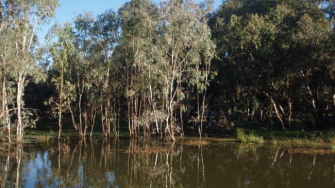
2023
The Centre for Ecosystem Science (CES), UNSW Sydney supports instruments of government, including strategies that improve effectiveness of biodiversity conservation, founded on a strong evidence base. Current rates of biodiversity loss around the world and in Australia are unprecedented. Researchers in CES have established track records in the research and management of Australia’s biodiversity, both within and outside protected areas. In particular, researchers focus on the three main realms of biodiversity (freshwater, terrestrial, marine) in the natural world (https://www.ecosystem.unsw.edu.au/) and welcomes the opportunity to provide a submission to the Biodiversity Act.
Our submission highlights nine major areas of biodiversity concern, where the current legislation is not achieving its stated objectives and suggest how to improve biodiversity conservation across NSW.
Each major area is listed below and contains one or more recommendations, details of each are contained in the submission.
Recommendation 1. Ensure funding for recovery of threatened species and ecological communities and effective management of threats to biodiversity is adequate, and improved and enhanced regulatory measures to limit further clearing as well as the repeal of the Kosciuszko Wild Horse Heritage Act 2018.
Recommendation 2. Actions required to ensure that the biodiversity legislation is adequate in relation to the management and conservation of native vegetation communities.
Recommendation 3. Ensure implementation of the Precautionary Principle, as defined by current NSW legislation, Protection of the Environment Administration Act 1991 Section 6(2), is incorporated and applied to all parts of the NSW Biodiversity Act and associated Regulations.
Recommendation 4. All species, populations and ecological communities, identified as Serious and Irreversible Impact (SAII) should trigger application throughout the Biodiversity Act, mandating the design of future development for avoidance of SAII, including no implementation of biodiversity offsets.
Recommendation 5. Ensure that Areas of Outstanding Biodiversity (AOBV) are identified and listed, including those already assessed as candidates, as well as future AOBVs.
Recommendation 6. Develop a comprehensive and up to date list of threatened plants and ecological communities for NSW.
Recommendation 7. Complete comprehensive systematic risk assessments of ecosystems in NSW, requiring mapping of ecotypes, identified by the Global Ecosystem Typology.
Recommendation 8. Increase Threatened Species Scientific Committee purview and resourcing
Recommendation 9. The role of the Biodiversity Conservation Advisory Panel be expanded to provide independent advice related to biodiversity conservation, beyond simply AOBVs.
A further matter - Liberation of native (but not Protected) animals after veterinary care (e.g. dingoes) is also detailed within the full submission document.
These recommendations are the result of deliberation by scientists within the UNSW CES of a list of 28 questions relating specifically to the efficacy of the Biodiversity Act compared to its objectives. This list of questions and our responses are contained within the document.

